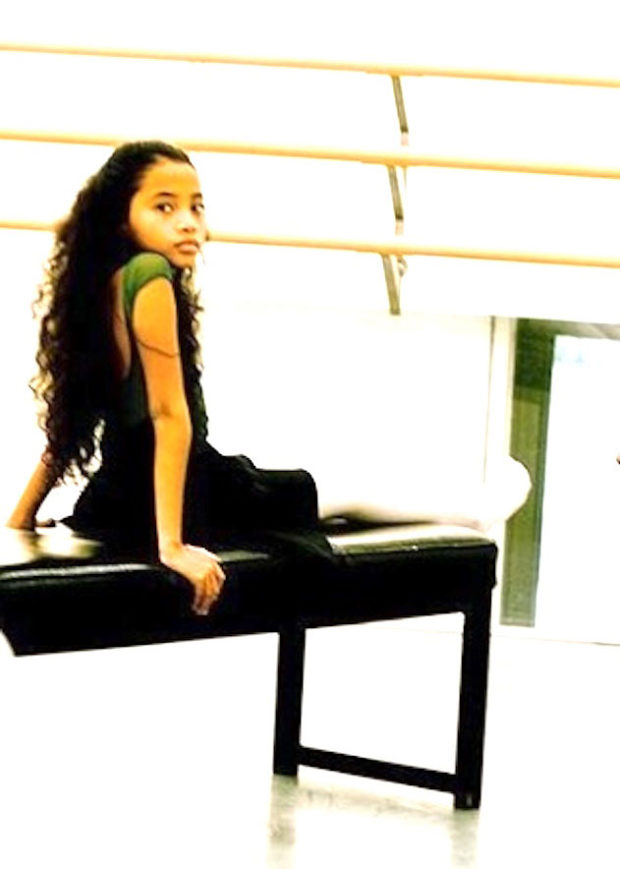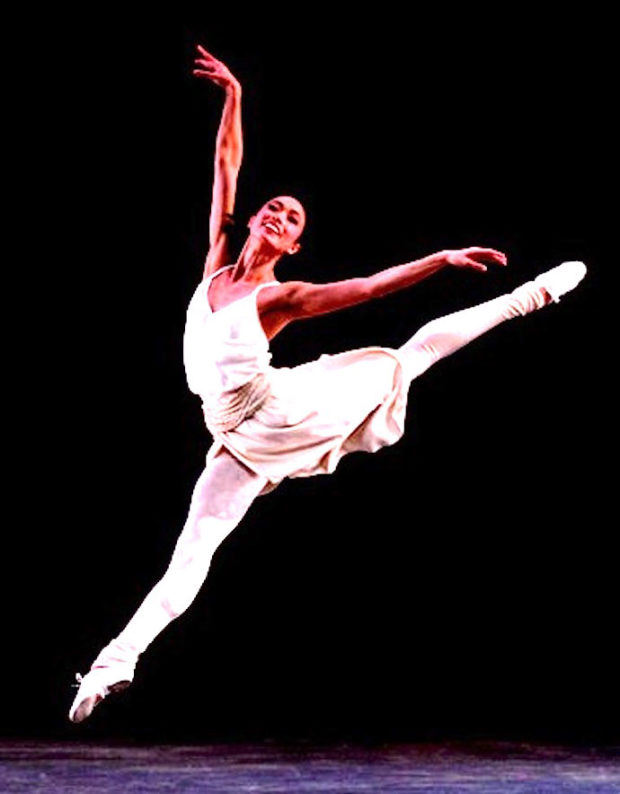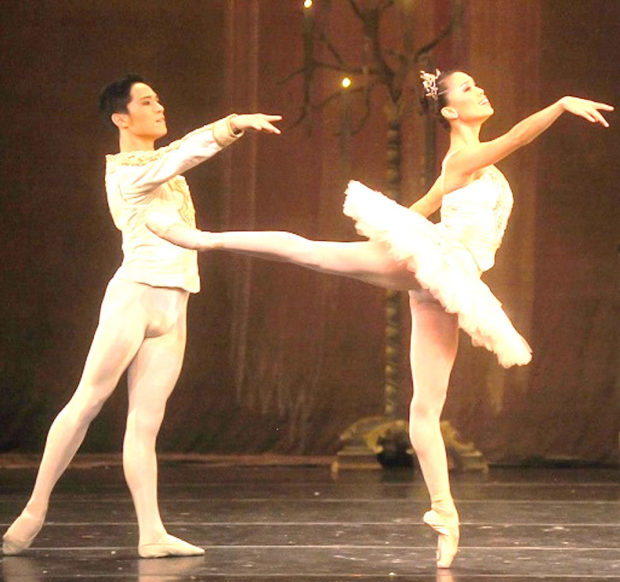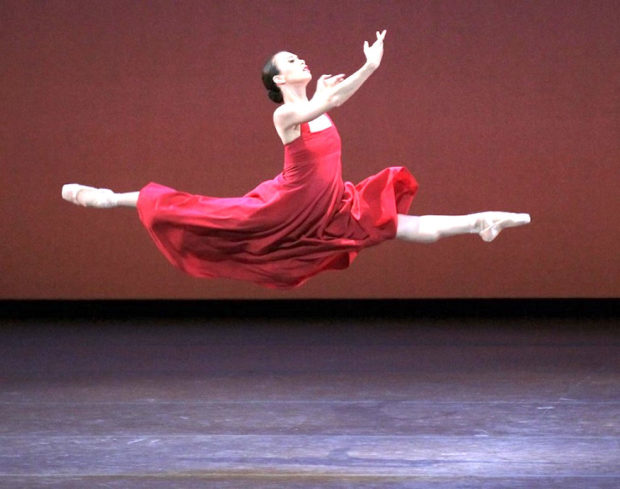Charlotte Nebres and the Fil-Am ballet stars who came before her

Filipino-Trinidadian American Charlotte Nebres plays Marie in George Balanchine’s “The Nutcracker.” INSTAGRAM
NEW YORK — In the ballet world, they say “being black” is a big thing, a cause for celebration.
When Misty Copeland became the first female black principal dancer for a major company like the American Ballet Theatre, it was a joyous, historic moment. In ballet where white dancers — “lily white,” according to Pointe Magazine — reign supreme, Copeland was able to smash the glass ceiling and break barriers.
It came as no surprise to people familiar with ballet that in announcing that 11-year-old Charlotte Nebres is playing the role of Marie in “The Nutcracker” this year, the media highlighted her African American ethnicity.

Stella Abrera, principal dancer at American Ballet Theatre.
Nebres, a ballerina for the School of American Ballet (SAB) is being hailed for being young and being black. The next Misty Copeland.
“The first black lead in NYC Ballet’s ‘The Nutcracker’,” reads the New York Post headline.
“Seeing a black girl as Marie in ‘The Nutcracker’ is ‘huge,’” says CBS News.
“Charlotte Nebres is the first black Marie, the young heroine of ‘George Balanchine’s The Nutcracker, at New York City Ballet,” is the opening line in a New York Times feature article.

Siblings Lia Cirio and Jeffrey Cirio when they were both with the Boston Ballet.
The mainstream coverage appears to highlight only half of Nebres’s ethnicity. While Charlotte’s mother, Danielle, is from Trinidad, her father, Joe, is from the Philippines. She is the middle of three children. The Fil-Am learned that her father is related to a prominent prelate, Fr. Bienvenido Nebres, who served as president of the Ateneo de Manila University for many years. It was pointed out on social media how in the accounts of this little girl’s rise to ballet prominence, her Filipino ethnicity is being “erased.”
“Omg I’ve been reading the headlines and no one mentions her Filipino background,” writes one on Facebook.
Filipino American dance artist and educator Roberto Villanueva explained the history of ballet tracing its storied roots in Italy in the 15th century. In an interview with The FilAm, Villanueva, the founder of BalaSole Dance Company, discussed how the predominantly white art genre is becoming conscious about the need for diversity.

Georgina Pazcoguin is first Asian American promoted to soloist role at the New York City Ballet. PAUL KOLNIK
“Ballet historically, from its roots in Italy during the 15th century and its professionalization in the 17th century until the 20th century, has been a (white) European art form,” he said. “So, there are very few blacks in the ballet world in general.”
Even though ballet started to make its way to the U.S. in the 1800s in a very small scale, it wasn’t until the first part of the 1900s that it started to gain popularity, he said. “It did not become a popular art form until the mid-1900s.”
While blacks have been in the American ballet scene earlier, it wasn’t until 1955 that a first black male dancer received a principal title in a major U.S. ballet company, he said. His name was Arthur Mitchell, and he was the first African American dancer with the New York City Ballet (NYCB).
The SAB where Nebres is a ballet student, was founded in 1934 by George Balanchine and Lincoln Kirstein. It is the dance academy of the New York City Ballet.
Before Copeland, there was African American Debra Austin who was named principal dancer in a regional ballet company, the Pennsylvania Ballet, in 1982, said Villanueva. But it was Copeland, he stressed, who reached the pinnacle in 2015 at the world-renowned American Ballet Theater (ABT) founded in 1939.
“There has been a big push and awareness campaign for black/brown ballerinas since Misty’s promotion to principal dancer in 2015,” he said.
The diversity campaign is making headway with reports that ballet is now starting to open its doors to dancers from other ethnicities. In the “Nutcracker” production where Nebres is portraying Marie, she is joined by other performers of mixed race — Tanner Quirk, who is half-Chinese and Sophia Thomopoulos, who is half-Korean, half-Greek, according to reports.
In the Filipino American community are dancers who have similarly broken stereotypes. Stella Abrera of California was promoted to the rank of principal dancer with the ABT in 2015, the same year as Copeland. Philadelphia-born Lia Cirio is currently a principal dancer with the Boston Ballet. Her younger brother Jeffrey Cirio, previously with Boston Ballet, became the first Fil-Am male principal dancer with the ABT before joining the English National Ballet as a guest artist in 2017. Lia and Jeffrey are biracial; their father is from Subic Bay who met his American wife when the family came to the U.S. Georgina Pazcoguin is NYCB’s first Asian American, first Filipina American ballerina promoted to a soloist role. She has a Filipino father, and her mother is Italian. @The FilAm

